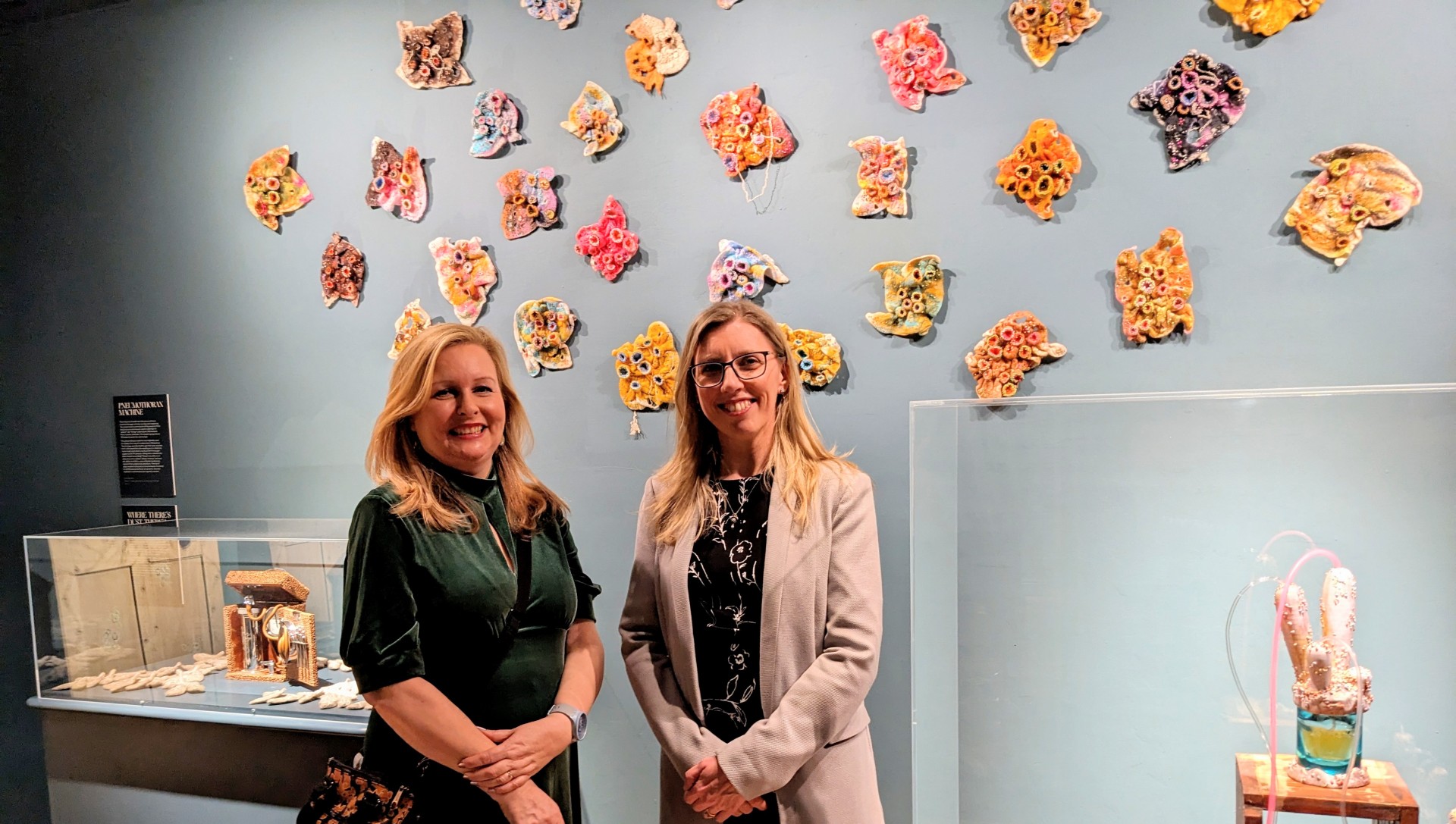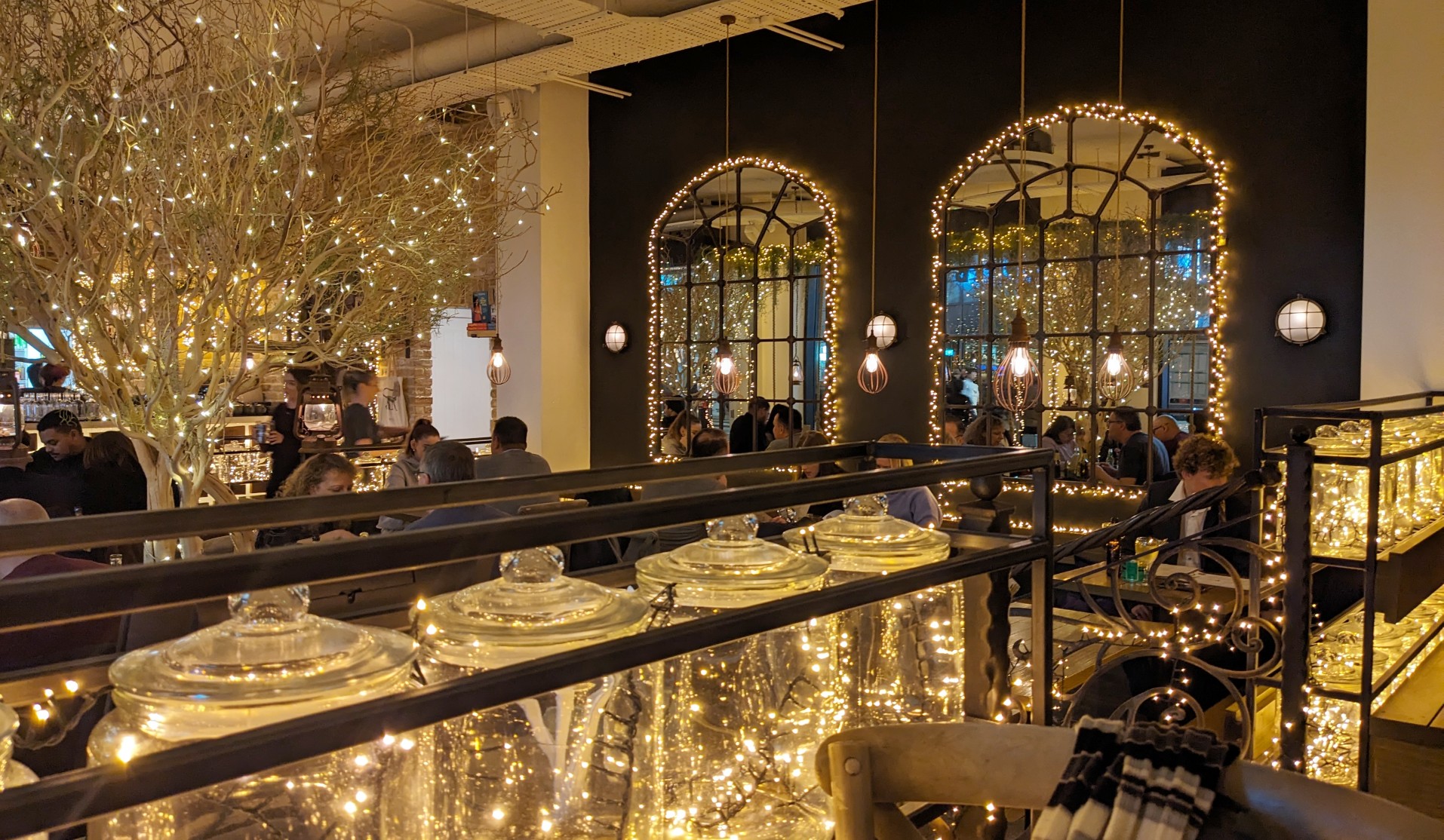The exhibition was first staged in London at the Gasworks but has now transferred to The Tetley in Leeds. These are very different spaces and I was interested to see how Lauren had responded to the challenge of using the historic building.
The title of the exhibition has evolved from Gault’s research into the life of her ancestor, Martha Craig. Craig was a fascinating woman: explorer, scientist and writer. It was the discovery of a science fiction novel (The Men of Mars 1907), written by Craig under the pseudonym Mithra, that was the catalyst for the work. It prompted Gault to explore the Mithra legend, to contemplate its place in an agricultural community and to relate it to her own upbringing and modern farming.
In Roman mythology Mithra is the guardian of cattle. The image of a bull and domestic dog is central to the symbolism of Mithra. CITHRA is clearly semantically linked to Mithra but is also a reference to the early Zoroastrian term for ‘seed’, ‘species’ and ‘livestock’.
Although Gault now lives in Glasgow, she grew up in rural Northern Ireland and still has links to the land. She is acutely aware of the big issues of the day around land usage and our relationship with nature. The role of domesticated animals is a particularly challenging theme. In the video explaining the development of CITHRA, Gault talks about the exhibition and ponders the contradictory role of the dog in society – how the dog was domesticated to protect livestock from wolves, how sheepdogs still work with livestock while at the same time domestic dogs attack sheep.
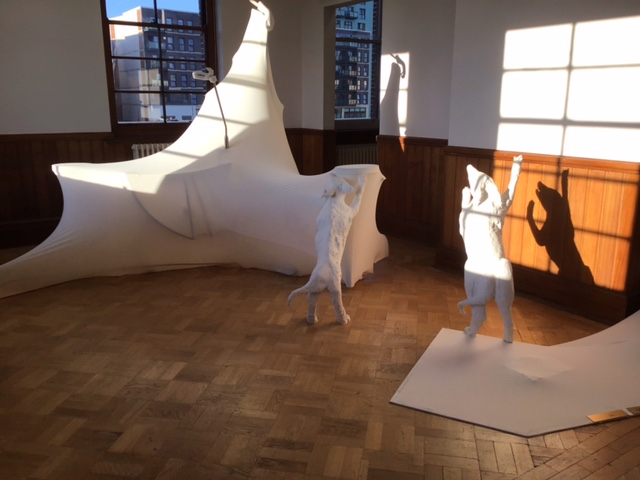
Photograph by Debbie Rolls.
The room where sculptures of dog and wolves intermingle is perhaps the most visually striking in the exhibition. The staging here benefits from the new location. When I visited in the early evening, the dipping sun was throwing shadows across the walls, multiplying the canine brood and suggesting new interactions; the white of the sculpture contrasting with dark shadows. As the exhibition progresses, this will happen earlier and earlier in the day.
This gallery is perhaps the most traditional form of Gault’s sculpture, although even here, unexpected materials, such as lycra, make an appearance. Gault’s practice is all about exploring and experimenting with materials. Rather than give the elements of the exhibition names, she provides gallery numbers and lists the materials employed in each space. However, she stresses the exhibition should be perceived as a single artwork.
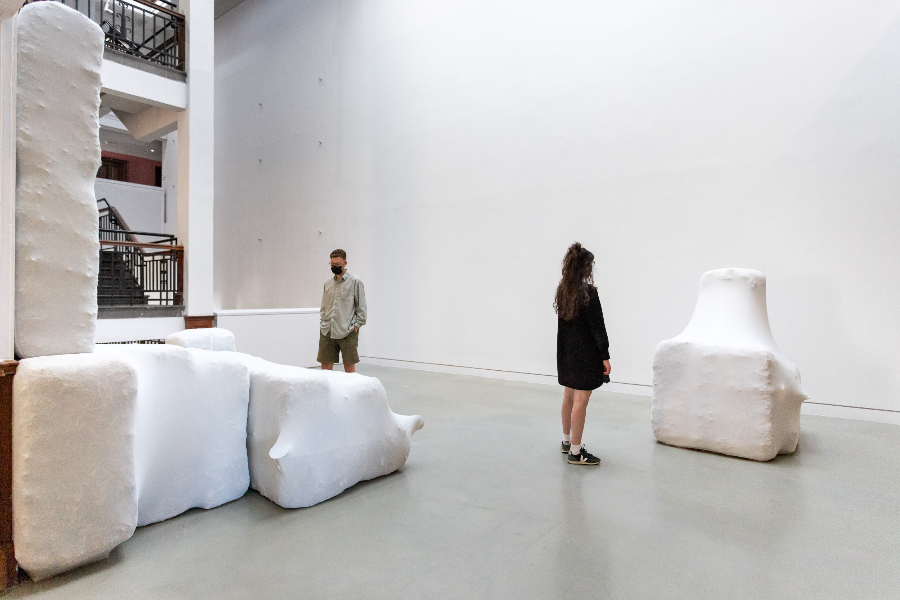
Lycra is extensively used in the exhibition. It is used to wrap, to contain, to stretch, sometimes hinting at what is contained within, at other times accentuating space. Hay bales thrust their spiky shoots into the fabric, highlighting the natural through the manmade wrapping. Tetley Director Bryony Bind asked Gault why she chose Lycra as a central material. Her response was that it was a ‘sneaky mechanism’ for changing volume, for expanding or reducing. Pressure, tension and release are common motifs in her work.
Other unusual materials include polished horn, used as a translucent membrane to allow light to enter a space. Lauren explained how earlier generations had used horn for windows before glass could be easily the produced. She also commented upon how farmers no longer favoured long-horned cattle owing to the possibility of the animals harming each other or humans, and that many breeds are now hornless. I was reminded of travelling in Madagascar, where cattle do still have horns which are used for a myriad of purposes including jewellery and utensils.
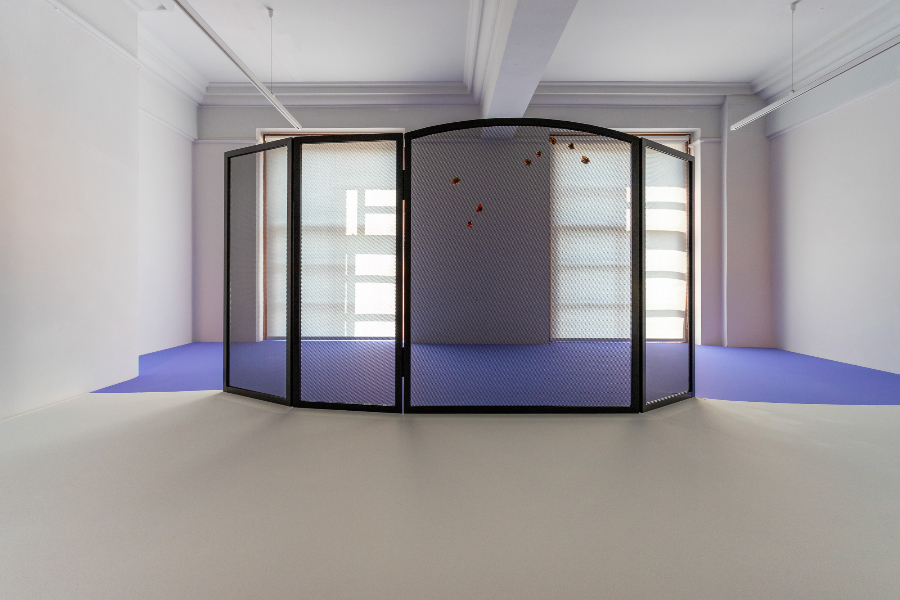
A material that has been added for the site-specific installation is wire mesh, in the form of fireguards. Gault was attracted to the fireplaces in the Tetley building and wanted to include something related to them. The protective purpose of a fireguard seems to relate to the theme of confining nature.
Sound is also utilised. The central atrium of the Tetley has largely been left open, with the exception of Lycra covered forms that reach out from some of the galleries. The space is filled by a soundscape developed by Richy Carey, Cithra Compositions, in response to Gault’s 2020 exhibition at the Gasworks.
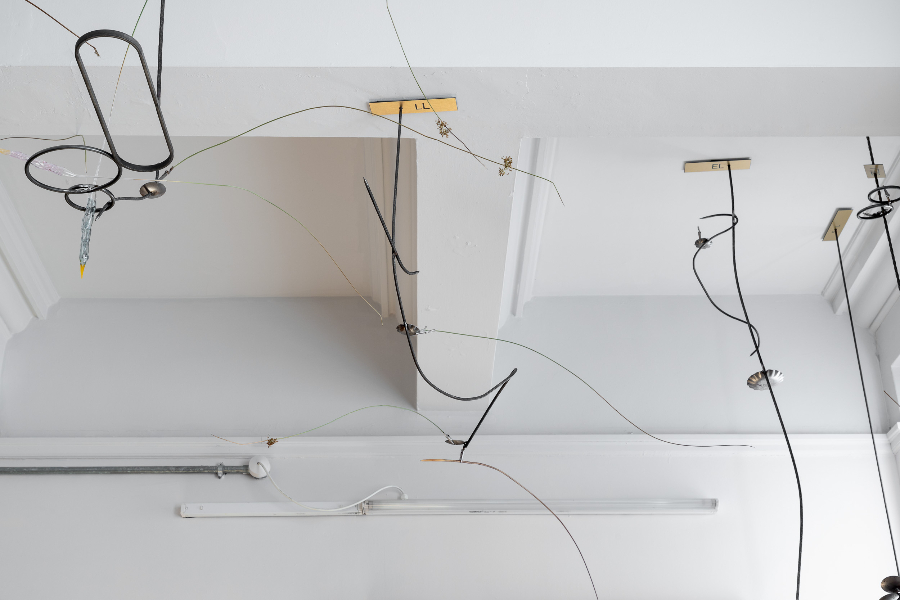
This exhibition is conceptual. It will mean different things to different people. It certainly made me think about the role of agriculture in our society: in the past, the present and the future. I considered our relationship to animals and the ethics behind this. However, beyond ideas, I marvelled at Gault’s ability to work with a wide range of materials. She produces artefacts with skill and presents materials in new and unexpected ways. She has used the gallery space offered by the Tetley well, responding to the opportunities it offers.
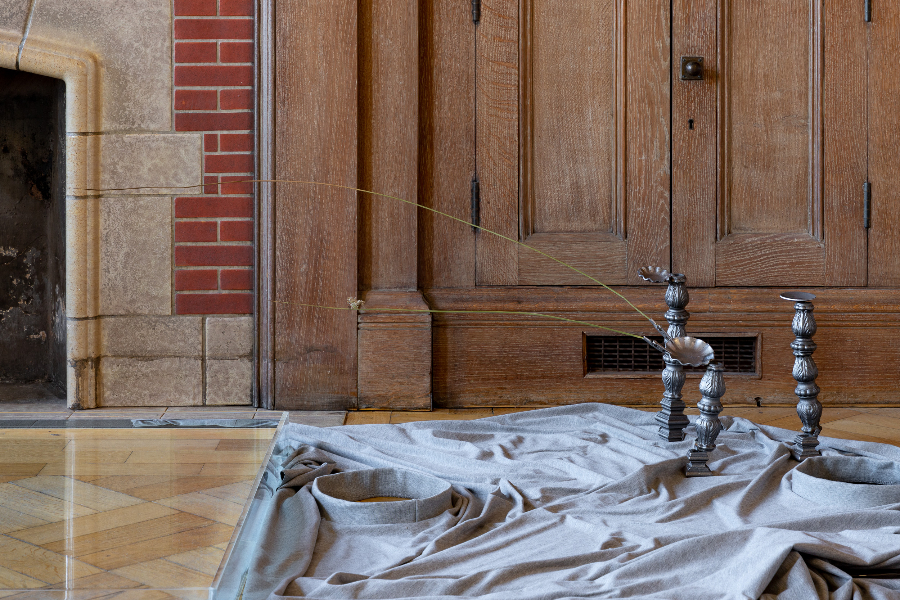
The exhibition continues until 3rd January 2022.
https://www.thetetley.org/whats-on/cithra
Lauren Gault, Cithra, 2021. Installation view at The Tetley. Commissioned and produced in partnership with Gasworks, London with the generous support of Freelands Foundation. Photography (unless otherwise captioned): Jules Lister.


